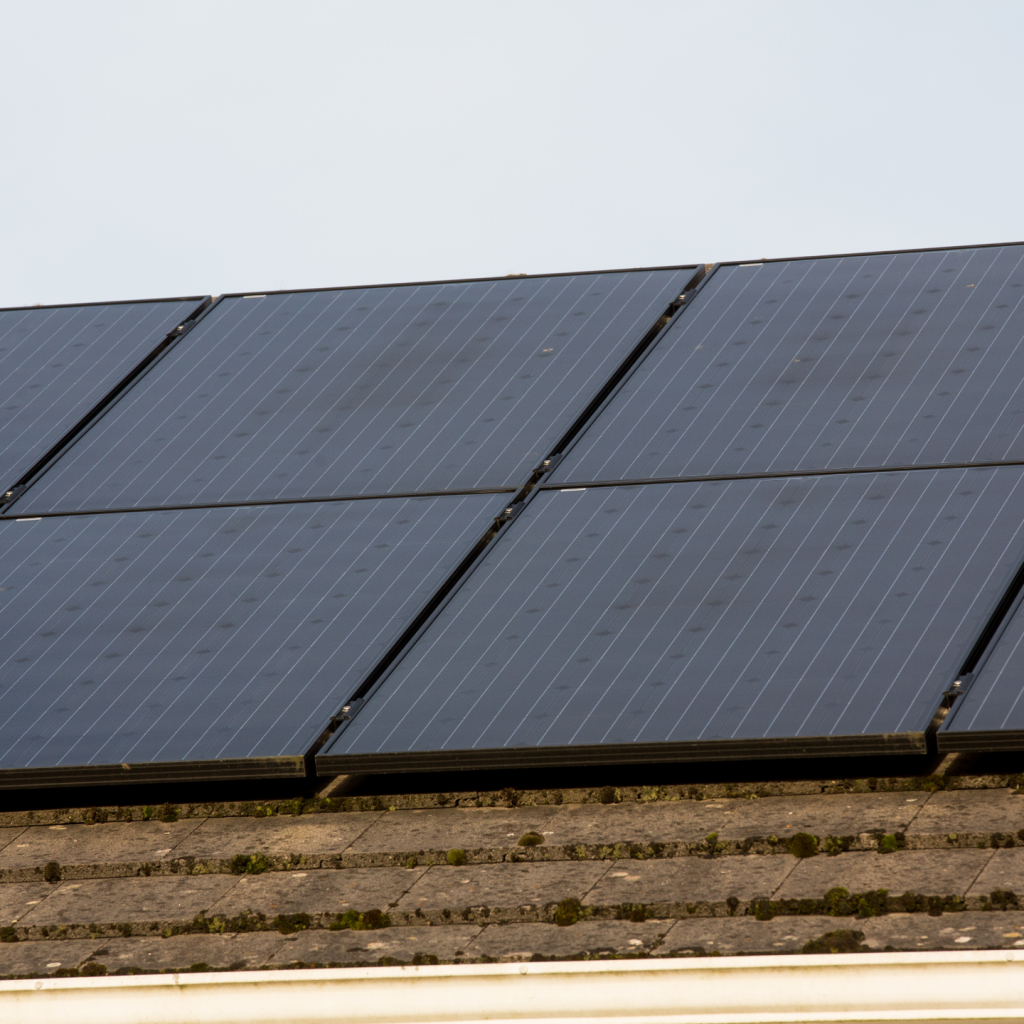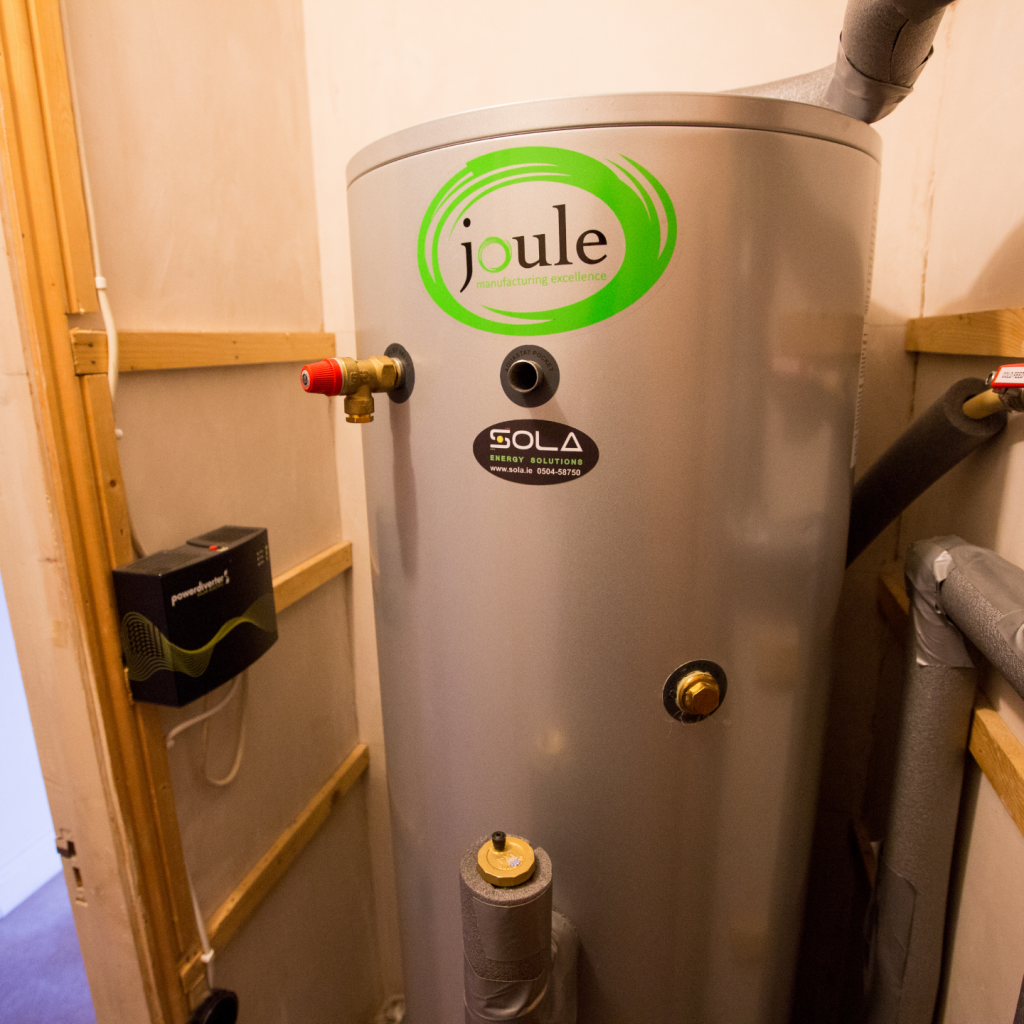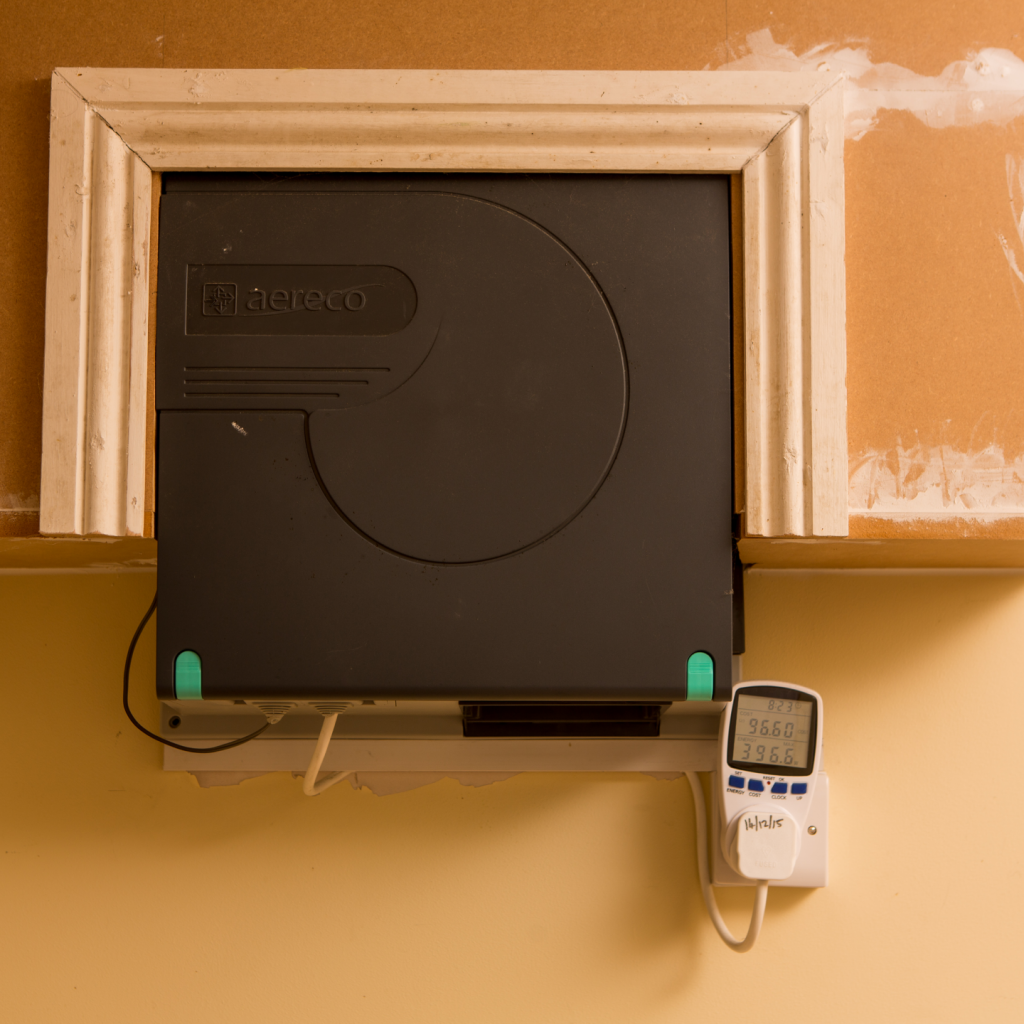The Measures
Retrofit measures for their 170 square metre two-story cavity wall house included:
- pumping the external walls with insulation
- replacement of the oil boiler with an air source heat pump
- replacement of some underperforming radiators
- installation of rooftop PV electricity panels
- air tightness testing and improvements
- installation of demand control ventilation.
Insulation had been put into the cavity walls and the attic when Charles and his wife were building the house in 1993.

“I thought it was wonderful but not compared to what we have now,” he laughs. As part of the retrofit, a contractor drilled hundreds of holes in the external wet-washed walls and pumped Kore fill expanded polystyrene insulation into the cavity walls. “Now you can’t see the difference but you can feel it,” says Charles. The attic was also insulated throughout with 300mm of earthwool fibreglass insulation.
Replacing fossil fuel boilers with a renewable source is one of the key Electric Ireland Superhomes criteria. Like many households Charles relied on an oil boiler to heat the radiators. It was replaced by an 8.5kW Monobloc air source heat pump. These pumps extract heat from outside air and concentrate it into the water that is pumped through the radiators. “They took the old boiler out and the heat pump went straight into the old plumbing.”

An Ecodan Flow Temperature Control 5 system was also installed with the heat pump. This includes intelligent room temperature control and energy monitoring. Ten old steel radiators had to be replaced with aluminium ones in order to maximise the efficiency of the new system. They were fitted with thermostatic radiator valves which work by sensing room air temperature and regulating the flow of water through the radiator to keep the room at the chosen temperature, in Charles’ case 19 degrees Celsius.
A 250l hot water cylinder with a special low temperature coil and temperature control was also installed, replacing the old hot water cylinder.
Prior to the retrofit Charles’ annual oil bill was €1500, sometimes €2000. Now it is zero.
2kW of phono solar PV panels, covering 12 square metres on the roof, and a pulsa micro inverter were installed to generate electricity. On a sunny day the solar electricity is used directly to power the heat pump – Charles has set the air source heat pump to come on for a couple of hours in the early afternoon. It also runs at night, in order to avail of nightsaver electricity. “The PV panels have contributed about €300 of electricity in the year, so our total mains electricity bill for heating and hot water is now €750,” says Charles. An immersion unit, which diverts excess electricity to the new hot water tank, was also installed as part of the retrofit. It automatically controls the immersion and diverts excess solar electricity into heating the hot water tank.

Air tightness is a concept that Charles had not come across previously. “It is amongst the simplest and most important in a retrofit,” he now says. The uncontrolled air changes in his house were 20 per hour. “The contractors put a thing on the front door with a big fan that blew in air,” explains Charles. “Then they went through the house with little smoky things. They followed around to see where the smoke was escaping such as between window frames and the walls.”
Once identified, the holes were plugged up and the uncontrolled air changes came down to four per hour, well below current building regulation standards. “We are now heating five times less air than before,” Charles points out.
Charles’ house was fitted with an Aereco demand control ventilation system that ventilates to the needs and demands of the occupants, while ensuring good indoor air quality. “The demand control ventilation is very good because even though the house is air-tight it is very fresh. It’s not stuffy,” says Charles.

The Results
At the end of the retrofit the Stanley Smith home has improved from a D3 to an A3 building energy rating. While Charles says he was not motivated by increased comfort (“I’m used to cold draughty houses where the first thing one did was reach for a sweater”), he says that living in a Superhome is much more comfortable. “It is financially successful too,” says Charles. The payback for us is definitely under ten years.” Overall he cannot sing the praises of Electric Ireland Superhomes highly enough. “Nationally we have to retrofit 100,000 houses per year. This is a good way of doing a lot of them. It’s retrofitting made easy. I couldn’t recommend it more.”

